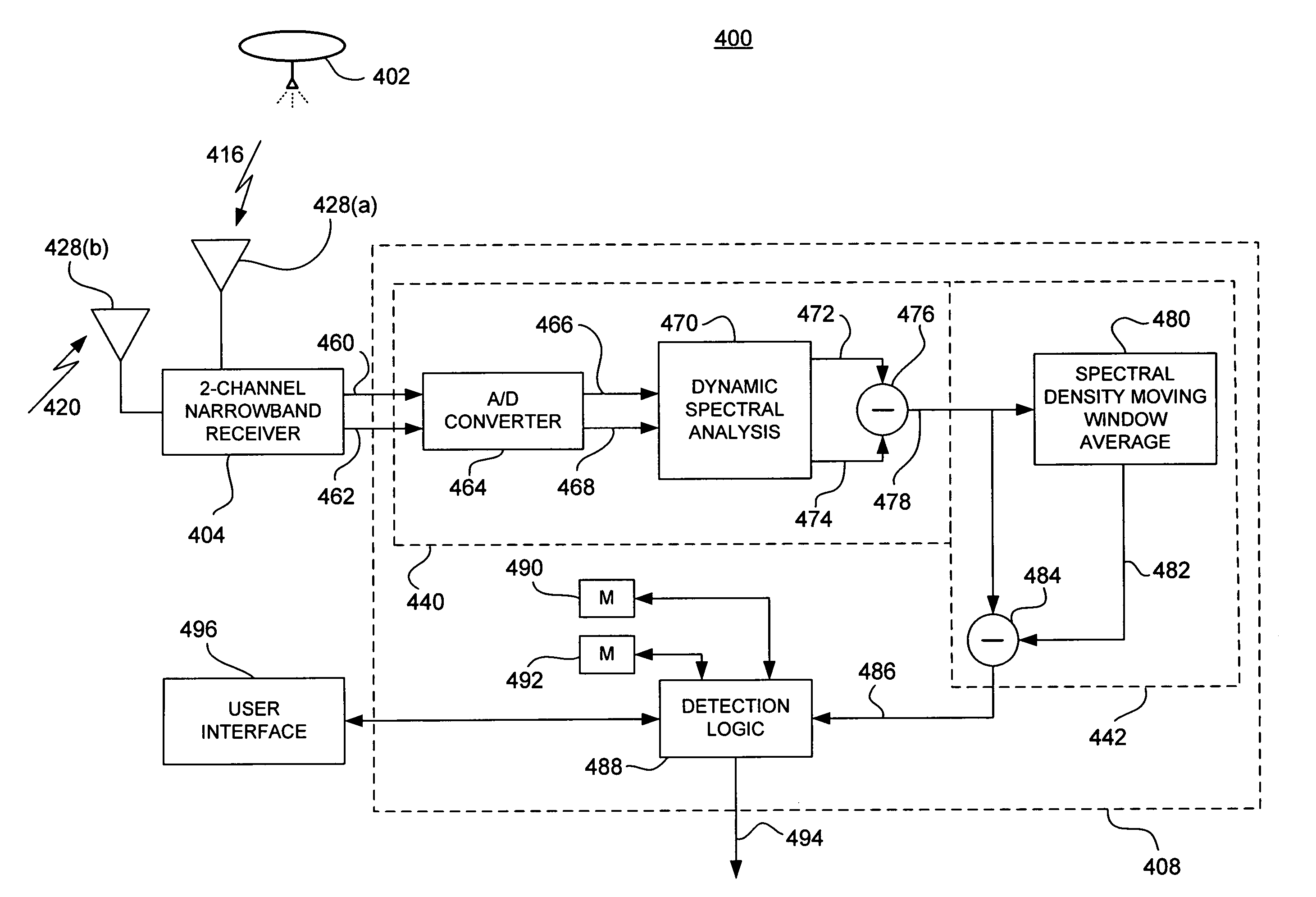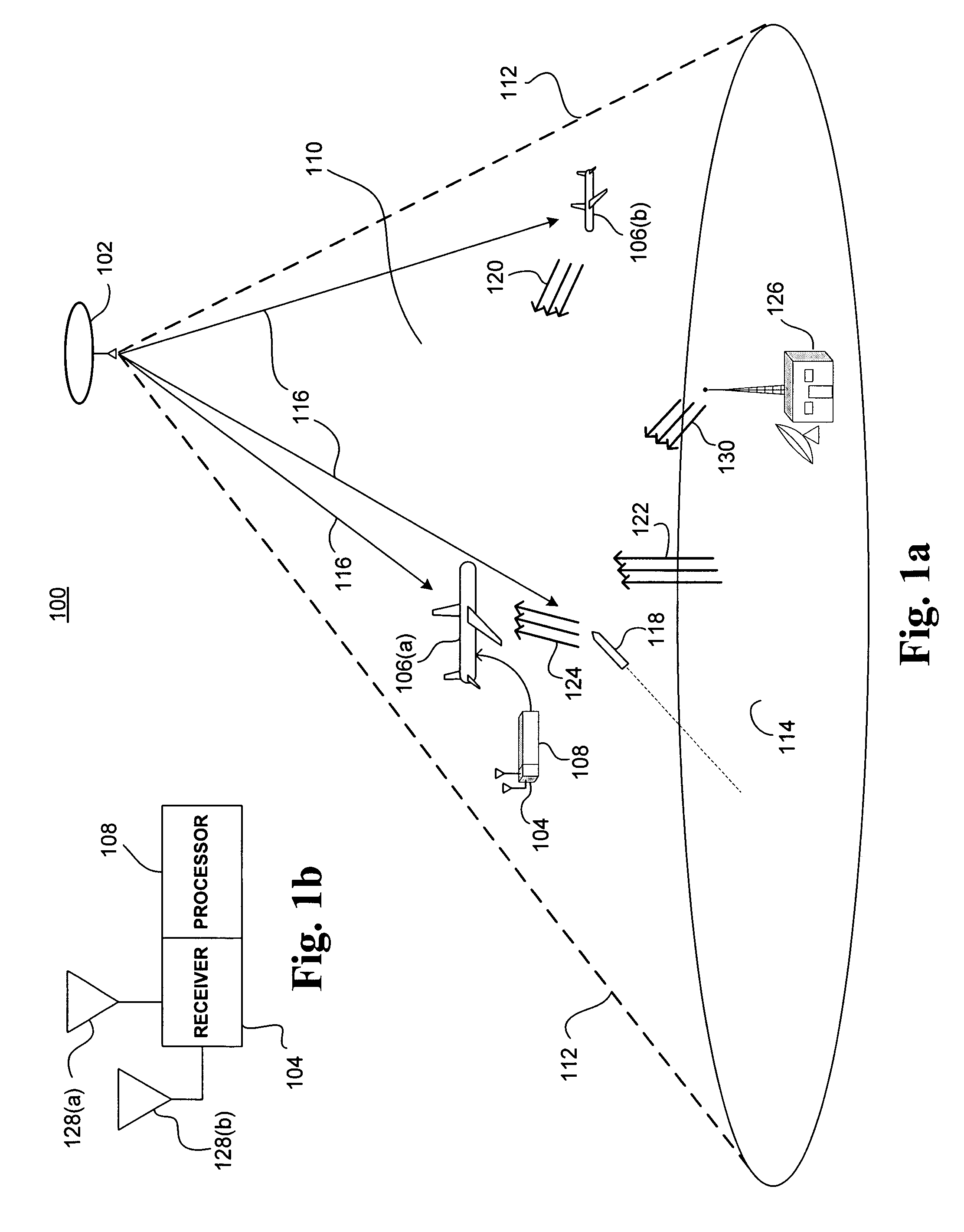System and method for onboard detection of ballistic threats to aircraft
a technology for aircraft and ballistic threats, applied in the field of airborne threat monitoring systems, can solve the problems of non-military applications, no widespread use of shoulder-fired munitions, and the cost of upgrading for non-military applications
- Summary
- Abstract
- Description
- Claims
- Application Information
AI Technical Summary
Benefits of technology
Problems solved by technology
Method used
Image
Examples
Embodiment Construction
[0026]As utilized herein, terms such as “about” and “substantially” and “near” are intended to allow some leeway in mathematical exactness to account for tolerances that are acceptable in the trade. Any deviations upward or downward from the value modified by the terms “about” or “substantially” or “near” in the range of 1% to 20% or less should be considered to be explicitly within the scope of the stated value. Accordingly, two parts are “substantially similar” if a comparison between the two yields at least 80% commonality in a selected characteristic.
[0027]As used herein, the term “software” includes source code, assembly language code, binary code, firmware, macro-instructions, micro-instructions, or the like, or any combination of two or more of the foregoing.
[0028]The term “memory” refers to any processor-readable medium, including but not limited to RAM, ROM, EPROM, PROM, EEPROM, disk, floppy disk, hard disk, CD-ROM, DVD, or the like, or any combination of two or more of the...
PUM
 Login to View More
Login to View More Abstract
Description
Claims
Application Information
 Login to View More
Login to View More - R&D
- Intellectual Property
- Life Sciences
- Materials
- Tech Scout
- Unparalleled Data Quality
- Higher Quality Content
- 60% Fewer Hallucinations
Browse by: Latest US Patents, China's latest patents, Technical Efficacy Thesaurus, Application Domain, Technology Topic, Popular Technical Reports.
© 2025 PatSnap. All rights reserved.Legal|Privacy policy|Modern Slavery Act Transparency Statement|Sitemap|About US| Contact US: help@patsnap.com



